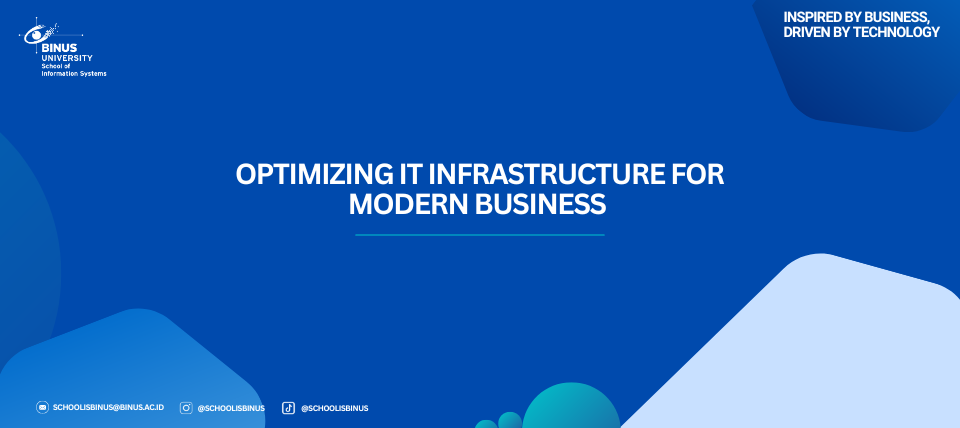Optimizing IT Infrastructure for Modern Business

In today’s fast-paced environment, a business’s strength is directly tied to the robustness and agility of its Information Technology (IT) Infrastructure. Beyond mere hardware and software, the modern IT infrastructure comprising networks, data centers, operating systems, and applications serves as the digital engine that powers all operations, innovation, and strategic goals. The shift from rigid, on-premises systems to flexible, cloud-based environments is not just a technological trend; it’s a fundamental requirement for digital transformation and sustaining a competitive edge.
The transition to cloud computing has fundamentally redefined IT infrastructure management. Cloud models, such as Infrastructure-as-a-Service (IaaS), offer massive benefits over traditional setups by providing scalability, elasticity, and cost-efficiency. One of the primary drivers for cloud adoption is cost optimization. Instead of large capital investments (CapEx) in physical hardware, businesses now use an operational expenditure (OpEx) model, paying only for the resources consumed. Research has focused heavily on methods to further optimize these cloud resources, particularly in multi-cloud environments where companies leverage services from several providers to avoid vendor lock-in and utilize best-in-class features. Advanced algorithms are being developed to minimize hourly costs for deploying complex informational infrastructure.
Modern business needs, especially those involving Big Data, AI, and Machine Learning workloads, demand an infrastructure that can scale instantly. Cloud infrastructure provides the rapid elasticity necessary to handle fluctuating demands. Tools and techniques are continuously being improved to ensure efficient resource allocation and dynamic capacity planning, often utilizing AI and machine learning to predict workload patterns and prevent performance bottlenecks before they occur. This agility directly supports faster innovation and time-to-market for new products and services. Digital transformation (DT) initiatives—from digitizing internal processes to creating new customer-facing digital products—rely entirely on a modern, capable IT infrastructure. A rigid or outdated infrastructure becomes the main roadblock to change.
Integrating advanced technologies like AI and high-performance data processing requires an infrastructure specifically optimized for data-intensive workloads. The cloud provides the necessary computational power and distributed computing architecture to efficiently process large datasets, which is crucial for modern applications like predictive analytics and large-scale machine learning models. Effective IT infrastructure governance is key to turning technology into a strategic asset, ensuring that the technology roadmap aligns with strategic business goals.
The evolution of IT Infrastructure, driven primarily by cloud computing and the demands of digital transformation, has moved it from a back-office utility to a central component of business strategy. Companies that succeed in the current competitive landscape are those that continuously invest in optimizing their infrastructure for cost, speed, and adaptability, ensuring they have a resilient, scalable platform ready to support the innovations of tomorrow.
References
Rahul Dev Singh, Gupta, V. K., & Patel, P. A. (2024). Optimization of big data processing using distributed computing in cloud environments. International Journal of Computer Technology and Science, 1(2), 01–07. https://doi.org/10.62951/ijcts.v1i2.58
Rolik, O. I., & Zhevakin, S. D. (2024). Cost optimization method for informational infrastructure deployment in static multi-cloud environment. Radio Electronics, Computer Science, Control, 3(1), 89–98. Retrieved from https://ric.zp.edu.ua/article/view/312936

